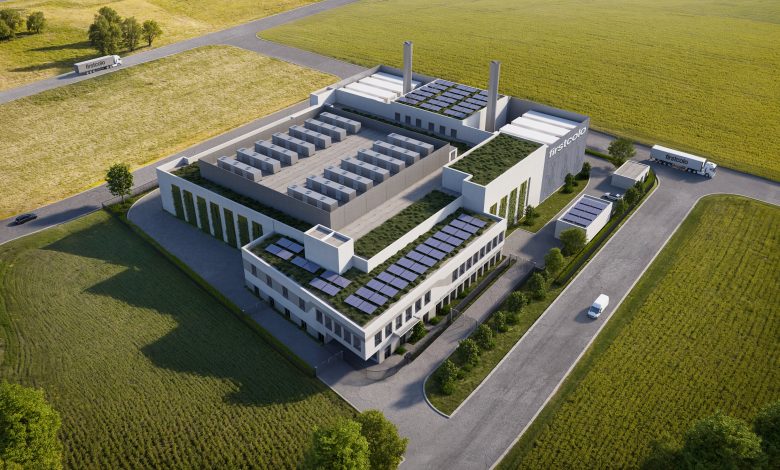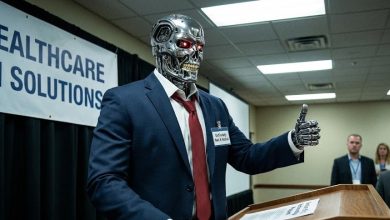
“The digital transformation of the global economy is advancing at unprecedented speed. At the heart of this development is artificial intelligence. Its applications range from language models and recommendation engines to medical diagnostics and the autonomous control of industrial processes. But AI’s expansion is inseparably linked to a challenge of global scale: rising energy demand.
Data centers, where these systems are trained and deployed, are not only technical hubs — they are becoming decisive factors in energy policy. It is no longer enough to respond reactively to surging consumption. We need a new mindset: data centers must be seen as active drivers of the energy transition, evolving from passive consumers into integral components of global energy systems. This shift requires not just technological optimization but a strategic reorientation that goes far beyond day-to-day operations.”
Data Centers as Architects of the Energy Transition
The starting point is clear: AI will demand not less, but dramatically more energy in the years ahead. Models are growing more complex, data volumes are expanding, and use cases are multiplying. Efficiency improvements alone will not offset this growth. The industry must anticipate demand curves and invest in infrastructures that channel this load sustainably.
That means going beyond simply lowering consumption. The sector must think systemically:
- How can data centers serve as catalysts for renewable energy generation?
- How can waste heat become a resource for urban energy supply?
- How can digital peak loads be synchronized with the fluctuating availability of green power?
The next major breakthroughs will come less from raw hardware performance than from energy intelligence. Data centers are evolving into energy orchestrators. Using AI—the very technology they host—they will analyze workloads and adapt consumption in real time to grid dynamics. A facility that flexibly shifts workloads not only boosts its own efficiency but also stabilizes the broader energy system. This interplay introduces a new dimension of responsibility: digital infrastructure is becoming an active partner in the energy economy.
A Symbiotic Future
True thought leadership also requires a broader perspective. The energy footprint of AI cannot be viewed in isolation—it must be weighed against the savings it enables across other industries. Smarter traffic management, more accurate medical diagnostics, optimized production lines, and climate research powered by AI could save far more energy long term than data centers consume.
For this equation to balance, operators must consciously position their infrastructure as a net contributor to global sustainability. Location strategy will also need to change. Today, data centers are often built near population hubs or network nodes. Tomorrow, proximity to renewable energy sources will be just as critical. Wind farms, solar arrays, and hydro plants can achieve greater profitability and create new regional value chains through direct partnerships with data centers.
In the future, data centers may act as flexible consumers, absorbing renewable energy surpluses and helping stabilize grids. This symbiosis could become a cornerstone of global energy architecture.
Changing the Narrative
At the same time, there is an opportunity to reshape public perception. Data centers have long been seen as silent, power-hungry infrastructure hidden in the background. Going forward, they must emerge as visible drivers of sustainable transformation—but only if they act with clarity and transparency.
Those who feed waste heat into district heating networks, operate their own solar fields, or enter targeted research partnerships not only improve operational efficiency but also shape the image of an industry taking responsibility.
The key insight: the energy challenge of AI is not purely technical—it represents a cultural turning point. Society will decide whether the benefits of AI justify its resource costs. Data centers have both the opportunity and the duty to influence that conversation, demonstrating that growth and sustainability are not mutually exclusive.
An Industry at a Crossroads
The future demands that operators think in decades, not quarters. Short-term cost reductions lose relevance if long-term energy systems are destabilized. True foresight means developing scenarios for the next 20 to 30 years:
- What role will data centers play in a world moving beyond fossil fuels?
- How can global AI clusters be networked so that consumption not only scales but actively aligns with renewable availability?
- What regulatory frameworks are required to make green infrastructure investment the rule, not the exception?
The industry stands at a crossroads. It can continue reacting passively to demand, reinforcing the image of a costly, energy-intensive burden. Or it can assume the role of a catalyst—creating a blueprint for the symbiosis of digitalization and sustainability through innovation, transparency, and collaboration.
The message is clear: data centers are not a peripheral factor in the global energy equation—they are at its core. Those who invest boldly today, plan with vision, and embrace responsibility can accelerate the energy transition while securing the future of artificial intelligence.




